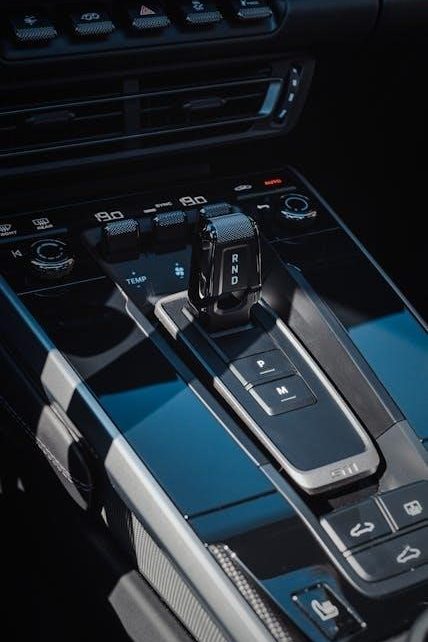Driving an automatic in manual mode sparks debate about its impact on performance, fuel efficiency, and transmission longevity. This article explores the pros and cons of manual mode usage.
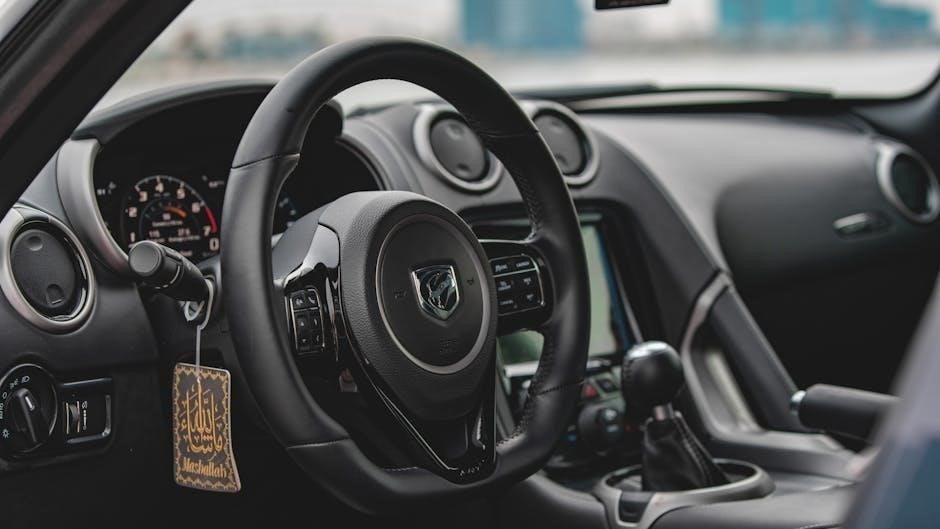
The Gearshift Debate: Automatic vs. Manual Mode
The debate over driving an automatic in manual mode centers on convenience, control, and potential risks. While some argue that manual mode offers better control in specific scenarios, others warn of reduced fuel efficiency and transmission wear. Proponents highlight the ability to override automatic shifting patterns, which can be beneficial in hilly terrain or towing situations; However, critics point out that frequent manual shifting may increase engine strain and emissions. The discussion also touches on transmission types, such as CVTs and dual-clutch systems, which behave differently in manual mode. Understanding these dynamics is key to making informed decisions about driving habits.
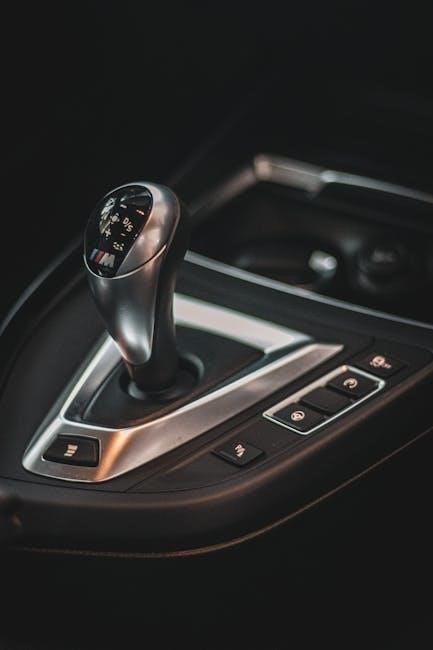
Understanding Automatic Transmissions in Manual Mode
Automatic transmissions in manual mode allow drivers to override the system, shifting gears manually without changing internal mechanisms. This feature offers control but may affect efficiency.
How Manual Mode Overrides Automatic Transmission Patterns
Manual mode enables drivers to bypass the automatic transmission’s default gear-shifting patterns, allowing for custom gear selection. By using paddles or shifters, drivers can force upshifts or downshifts, overriding the system’s programmed behavior. This feature is particularly useful in specific driving conditions, such as steep inclines or sudden overtakes, where manual control enhances performance. However, frequent or improper use of this override function can strain the engine and transmission, leading to potential wear and tear. Additionally, manual mode may increase fuel consumption and emissions, contradicting the efficiency of automatic driving.
Differences Between Manual and Automatic Shifting Mechanisms
Manual and automatic transmissions differ in shifting mechanisms. Manual transmissions rely on driver input via a clutch and gearshift, offering direct control. Automatics use a torque converter and sensors to shift gears automatically. In manual mode, automatics simulate manual-like control through paddle shifters or selector positions, but internal mechanisms remain automatic. This blend provides convenience and some control but may lack the precision of a true manual. The debate centers on whether manual mode in automatics offers real benefits or just mimics manual driving without the advantages, potentially causing unintended strain on the transmission and engine.

Potential Drawbacks of Driving in Manual Mode
Driving in manual mode can reduce fuel efficiency, increase transmission wear, and elevate engine emissions, potentially leading to long-term damage and higher maintenance costs over time.
Impact on Fuel Economy
Driving in manual mode can negatively impact fuel economy, as it overrides the automatic transmission’s optimized shifting patterns. This may lead to reduced efficiency, especially in city driving. Frequent manual shifting disrupts the system’s ability to maintain optimal RPMs for fuel conservation. Additionally, aggressive driving styles, such as rapid acceleration or excessive downshifting, can further lower fuel efficiency. While not all vehicles experience significant drops, consistent manual mode use often results in slightly higher fuel consumption compared to fully automatic operation. This effect is more pronounced in traffic-heavy or stop-and-go conditions where the transmission’s efficiency is most critical.
Transmission Wear and Tear Concerns
Using manual mode on an automatic transmission can potentially accelerate wear and tear. Constantly overriding the system’s designed shifting patterns may strain internal components like clutches and bands. Aggressive manual shifting, especially under heavy load, can lead to increased friction and heat buildup, reducing transmission lifespan. However, most modern transmissions are built to handle manual mode operations without significant damage. Despite this, excessive use, particularly in stop-and-go traffic or high-stress driving, can cause premature wear. It’s essential to balance manual mode usage with normal driving patterns to avoid unnecessary strain on the transmission’s internal mechanisms and ensure longevity.
Engine Strain and Increased Emissions
Driving in manual mode can lead to engine strain if gears are not shifted appropriately, especially in low-speed or heavy-load conditions. Engine lugging, where the RPM drops too low for the current gear, can cause increased stress on the engine. This strain may result in higher emissions as the engine works harder to maintain power. Modern engines often compensate by downshifting automatically, but consistent misuse of manual mode can still lead to inefficiencies. Over time, this could potentially increase emissions and reduce engine longevity. Proper shifting techniques and awareness of engine RPM levels are crucial to minimizing these negative effects.
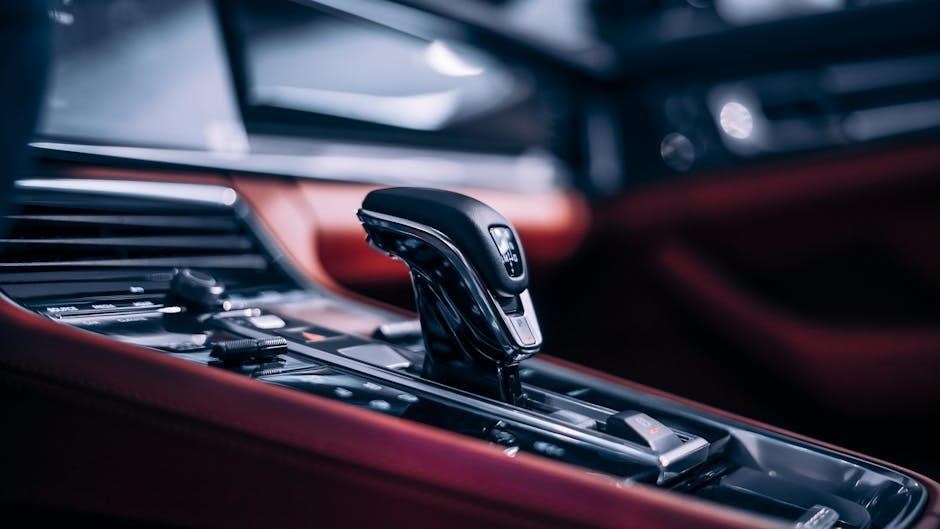
Benefits of Using Manual Mode
Manual mode offers better control in specific driving situations, such as hills or towing, and can reduce engine lugging, optimizing performance and preventing unnecessary strain.
Better Control in Specific Driving Scenarios
Manual mode provides enhanced control in challenging driving conditions, such as steep hills or towing heavy loads, allowing drivers to maintain optimal gear selection. This prevents unnecessary shifts that can strain the engine or reduce stability. Additionally, in heavy traffic or emergency maneuvers, manual mode offers more precise control over acceleration and deceleration, enabling smoother transitions. It also minimizes engine lugging, where the engine RPM drops too low, which can lead to increased wear. By actively managing gears, drivers can better anticipate and respond to road demands, especially in unpredictable environments. Responsible use ensures these benefits without compromising transmission longevity or fuel efficiency.
Reducing Engine Lugging
Manual mode helps prevent engine lugging, a condition where the engine operates below its ideal RPM range, leading to increased wear and reduced performance; By manually selecting lower gears, especially during climbs or when towing, drivers can maintain optimal engine speed. This not only enhances power delivery but also minimizes strain on the engine. Engine lugging can result in inefficient combustion, higher emissions, and accelerated wear on internal components. Using manual mode responsibly allows drivers to keep the engine within its efficient operating range, thereby preserving longevity and maintaining responsiveness. This is particularly beneficial in scenarios where consistent power output is crucial.
Improved Performance in Hilly or Towing Situations
Engaging manual mode in hilly or towing scenarios enhances performance by allowing precise gear control. Manually downshifting before inclines maintains engine RPMs, preventing lugging and ensuring consistent power delivery. This control is crucial when towing, as it helps sustain speed and stability uphill. While concerns about transmission wear exist, the benefits in these conditions often justify manual mode use, provided it’s done responsibly. This approach minimizes engine strain and enhances overall driving efficiency in challenging terrains.

Transmission-Specific Considerations
Automated manual transmissions, CVTs, dual-clutch, and torque converter systems each respond differently to manual mode. CVTs and dual-clutch transmissions may experience increased wear and reduced efficiency.
CVTs (Continuously Variable Transmissions)
CVTs are particularly sensitive to manual mode usage, as they rely on continuous belt movement rather than fixed gears. Using manual mode can disrupt their efficiency, causing the engine to lug or rev excessively. This strain may lead to increased wear on the belt and pulleys. Additionally, CVTs are more complex and harder to maintain than traditional automatics, often requiring specialized tools and expertise for repairs. Prolonged manual mode use can accelerate wear and reduce the transmission’s lifespan, making it less ideal for drivers who frequently engage manual shifting. This underscores the need for careful consideration before using manual mode with CVTs.
Dual-Clutch and Torque Converter Transmissions
Dual-clutch transmissions (DCTs) and torque converter automatics handle manual mode differently. DCTs, with their pre-selective gear engagement, can offer faster shifts but may experience jerky transitions if not synchronized with engine speed. Torque converter transmissions, while smoother, may see increased line pressure during manual shifting, leading to abrupt gear changes. Both systems are designed to handle manual mode without damage, but improper use, like downshifting without matching engine RPM, can cause wear. However, modern systems often include safeguards to prevent abuse. Overall, while not inherently harmful, manual mode use should align with manufacturer guidelines to optimize performance and longevity. Proper technique is key to avoiding unnecessary strain.
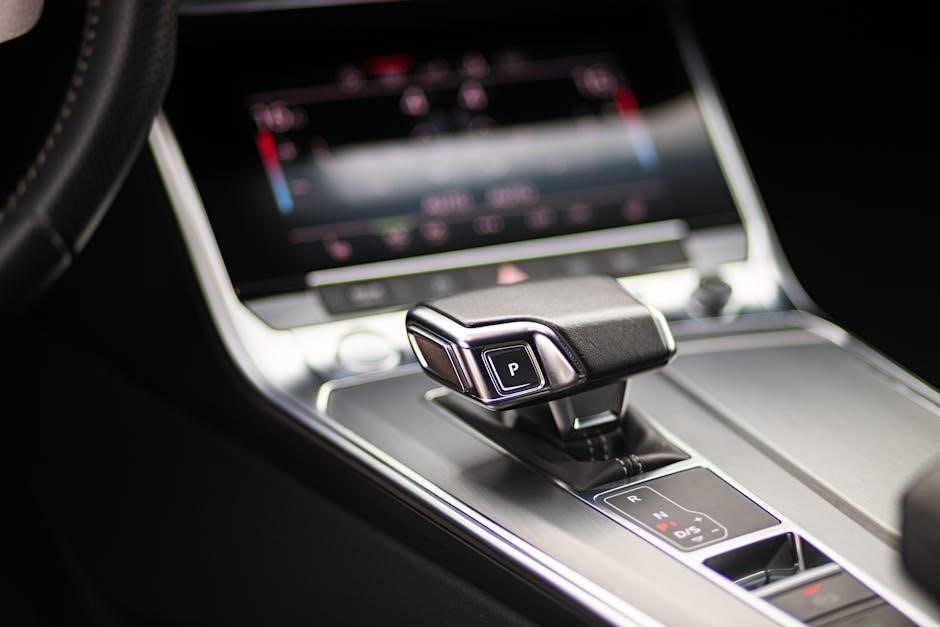
Common Issues in Manual Mode
Driving in manual mode can cause downshifting problems at low speeds, jerky shifts from increased line pressure, and malfunctions in speed sensors affecting gear transitions.
Downshifting Problems in Low-Speed Situations
Low-speed downshifting issues are common in manual mode, especially in automatic transmissions. When drivers manually downshift at low speeds, the vehicle may hesitate or fail to engage the lower gear smoothly. This can lead to abrupt stops or jerky movements, particularly when approaching traffic lights or navigating through heavy traffic. The transmission may struggle to recognize the appropriate gear, causing discomfort for both the driver and passengers. Such problems are more pronounced in vehicles equipped with CVTs or dual-clutch transmissions, which are designed to prioritize smoothness over manual control. Proper adjustment of driving techniques can mitigate these issues.
Jerky Shifts Due to Increased Line Pressure
Jerky shifts are a frequent complaint when driving an automatic in manual mode. This occurs because manual shifting often increases transmission line pressure to ensure quick gear changes. While this can enhance performance, it may result in abrupt shifts, especially at low speeds or during light acceleration. Drivers might feel uncomfortable with the vehicle’s responsiveness, particularly in stop-and-go traffic. Over time, increased line pressure could lead to wear on internal transmission components. However, most modern transmissions are designed to handle these pressures, and jerky shifts are more of a drivability concern than a sign of impending damage. Balancing control and comfort is key.
Speed Sensor Malfunctions
Speed sensor malfunctions can emerge when driving an automatic in manual mode, particularly if the transmission struggles to register the correct gear. This issue often manifests as unexpected downshifting or failure to shift smoothly. Faulty sensors may miscommunicate data to the transmission control module, leading to erratic behavior. In some cases, the vehicle might not recognize the appropriate gear, causing it to hesitate or lurch. While this is typically not caused by manual mode usage itself, it can be exacerbated by frequent manual shifting. Regular maintenance and sensor calibration are essential to prevent such problems and ensure seamless transmission operation.
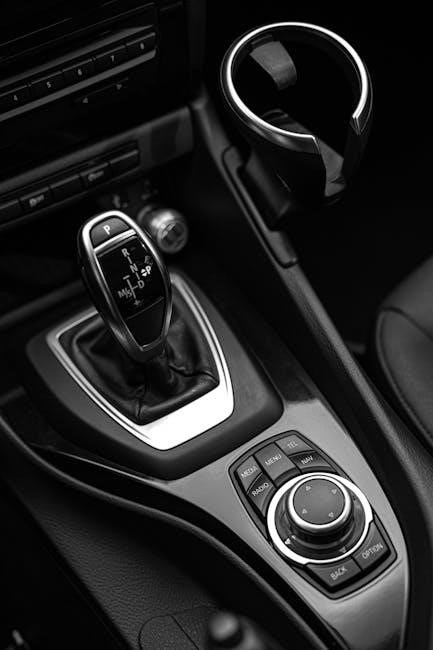
Maintenance and Repair Implications
Driving in manual mode may require specialized maintenance, especially for CVTs, which are harder to service. Regular checks on shifters and sensors are crucial to prevent malfunctions.
Specialized Maintenance Needs for Manual Mode Usage
Manual mode usage often requires more frequent inspections of the transmission system. This includes checking the shifters, sensors, and internal components for wear and tear. CVTs, in particular, demand specialized tools and trained technicians for maintenance, as their unique design makes them harder to service compared to traditional automatic or manual transmissions. Regular servicing ensures smooth operation and prevents potential issues like faulty shifters or sensors. Additionally, maintaining the correct fluid levels and quality is crucial to prevent overheating and ensure optimal performance in manual mode. These maintenance needs can increase the overall cost of ownership over time.
Identifying Faulty Shifters or Sensors
Faulty shifters or sensors can cause unexpected behavior in manual mode. Common signs include erratic shifting, delayed responses, or failure to engage gears. Drivers may notice jerky shifts or the transmission refusing to downshift, especially at low speeds. In some cases, the vehicle may not register the correct gear, leading to improper engine RPMs. Diagnosing these issues often requires specialized tools to test the transmission’s speed sensor and shifter components. Cleaning or replacing faulty connectors and contacts may resolve the problem, but severe cases might necessitate professional intervention to repair or replace damaged parts, ensuring smooth operation in manual mode.
When to Use Manual Mode Responsibly
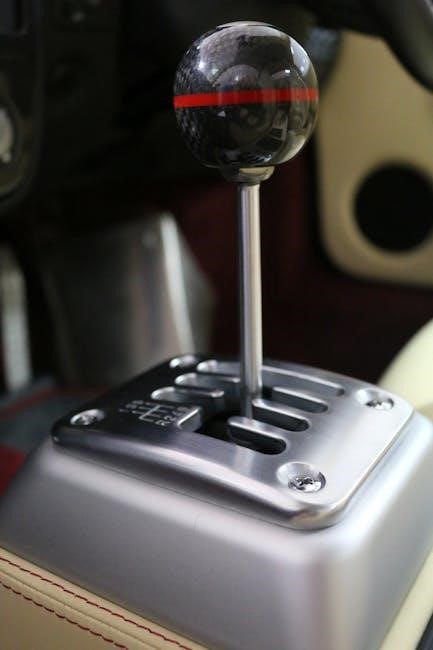
Manual mode is best used in specific scenarios, such as uphill climbs or towing, where control over gears enhances performance. It’s also beneficial in low-speed situations like stop-and-go traffic, where it prevents constant automatic shifting. However, avoid excessive use in normal driving conditions, as it can reduce fuel efficiency and cause unnecessary wear. Drivers should also refrain from manual mode during high-speed cruising, as automatic systems are optimized for such conditions; By understanding these contexts, drivers can leverage manual mode effectively without compromising their vehicle’s longevity or efficiency. Responsible use ensures both performance and preservation of the transmission system.
Final Thoughts: Weighing the Pros and Cons
Driving an automatic in manual mode offers both benefits and drawbacks. On one hand, it provides better control in challenging conditions like hills or towing, reduces engine lugging, and can improve performance. However, it may decrease fuel economy, cause jerky shifts, and potentially strain the engine. The decision to use manual mode should be based on specific driving needs. While it isn’t inherently harmful, excessive or unnecessary use could lead to long-term wear on the transmission. Balancing these factors helps drivers make informed choices, ensuring they maximize the advantages while minimizing potential downsides. Moderation and awareness are key to responsible manual mode usage.

Final Recommendations
Use manual mode judiciously, primarily in specific scenarios like uphill driving or towing, to maintain control and efficiency without causing unnecessary strain on the transmission system.
Best Practices for Driving in Manual Mode
When driving in manual mode, ensure smooth transitions by avoiding abrupt shifts and maintaining steady throttle input. Use manual mode primarily in situations requiring precise control, such as navigating steep inclines or towing heavy loads. Avoid unnecessary downshifting in low-speed conditions to prevent jerky movements. Keep an eye on engine RPMs to prevent lugging, and refrain from redlining the engine frequently. Regularly checking transmission fluid levels and ensuring proper maintenance can help mitigate potential wear. Additionally, familiarize yourself with your vehicle’s specific manual mode features and limitations to optimize performance and longevity.
When to Seek Professional Help
If you notice unusual behavior while driving in manual mode, such as jerky shifts, failure to engage gears, or erratic RPM fluctuations, consult a professional. Persistent issues like downshifting problems or speed sensor malfunctions require expert diagnosis. If your transmission exhibits signs of wear, such as slipping or delayed shifts, seek immediate assistance. Additionally, if your vehicle’s manual mode features stop functioning correctly, like faulty paddles or shifters, a mechanic can identify and repair underlying issues. Regular maintenance by trained personnel, especially for complex transmissions like CVTs, is crucial to prevent long-term damage and ensure optimal performance.
